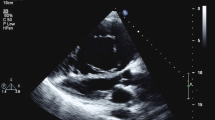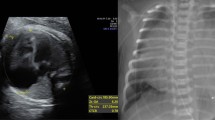Opinion statement
Ebstein anomaly is a developmental abnormality of the tricuspid valve and right ventricle that results in tricuspid regurgitation and right heart enlargement. Because of the variation in clinical severity and associated findings, patients require a detailed, well-tailored evaluation. For these reasons, management of adults with Ebstein anomaly should take place in a center with expertise in adult congenital heart disease. In many patients, the decision regarding if and when to perform surgery remains controversial, largely because of a lack of published data demonstrating improved postoperative symptoms and survival compared to the natural history of the disease. Because standard two-dimensional echocardiography and cardiovascular magnetic resonance imaging planes do not provide the necessary data to preoperatively manage patients, comprehensive echocardiography and cardiovascular magnetic resonance imaging protocols by experts trained in congenital heart disease are essential in the preoperative management of patients with Ebstein anomaly. As patients may be unaware of their exercise limitations, and for prognostic value, serial cardiopulmonary exercise stress testing is very useful in the evaluation of Ebstein anomaly patients. Surgical tricuspid valve repair historically has not been highly successful because of the marked distortion of tricuspid valve leaflets and right ventricular pathology. Over the last several years, reports of newer surgical techniques to repair the valve, with concurrent advances in arrhythmia management of patients hold promise for improved long term outcomes of patients with Ebstein anomaly. However, because Ebstein anomaly is rare and tricuspid valve repair remains technically challenging, the newer valve repair techniques have not yet gained widespread acceptance throughout the adult congenital heart disease community.

Similar content being viewed by others
References and Recommended Reading
Papers of particular interest, published recently, have been highlighted as: • Of importance •• Of outstanding importance
van Son JA, Konstantinov IE, Zimmermann V. Wilhelm Ebstein and Ebstein's malformation. Eur J Cardio-Thorac Surg: Off J Eur Assoc Cardio-Thorac Surg. 2001;20:1082–5.
Hoffman JI, Kaplan S. The incidence of congenital heart disease. J Am Coll Cardiol. 2002;39:1890–900.
Attenhofer Jost CH, Connolly HM, Dearani JA, Edwards WD, Danielson GK. Ebstein's anomaly. Circulation. 2007;115:277–85.
Balaji S, Dennis NR, Keeton BR. Familial Ebstein's anomaly: a report of six cases in two generations associated with mild skeletal abnormalities. Br Heart J. 1991;66:26–8.
Rosenmann A, Arad I, Simcha A, Schaap T. Familial Ebstein's anomaly. J Med Genet. 1976;13:532–5.
Vermeer AM, van Engelen K, Postma AV, Baars MJ, Christiaans I, De Haij S, et al. Ebstein anomaly associated with left ventricular noncompaction: an autosomal dominant condition that can be caused by mutations in MYH7. Am J Med Genet C: Semin Med Genet. 2013;163C:178–84.
Anderson KR, Lie JT. The right ventricular myocardium in Ebstein's anomaly: a morphometric histopathologic study. Mayo Clin Proc Mayo Clin. 1979;54:181–4.
Bettinelli AL, Mulder TJ, Funke BH, Lafferty KA, Longo SA, Niyazov DM. Familial ebstein anomaly, left ventricular hypertrabeculation, and ventricular septal defect associated with a MYH7 mutation. Am J Med Genet A. 2013;161A:3187–90.
Barbara DW, Edwards WD, Connolly HM, Dearani JA. Surgical pathology of 104 tricuspid valves (2000–2005) with classic right-sided Ebstein's malformation. Cardiovasc pathol: Off J Soc Cardiovasc Pathol. 2008;17:166–71.
Martinez RM, O'Leary PW, Anderson RH. Anatomy and echocardiography of the normal and abnormal tricuspid valve. Cardiol Young. 2006;16 Suppl 3:4–11.
Attie F, Rosas M, Rijlaarsdam M, Buendia A, Zabal C, Kuri J, et al. The adult patient with Ebstein anomaly. Outcome in 72 unoperated patients. Medicine. 2000;79:27–36.
Park SJ, Chung S, On YK, Kim JS, Yang JH, Jun TG, et al. Fragmented QRS complex in adult patients with Ebstein anomaly and its association with arrhythmic risk and the severity of the anomaly. Circ Arrhythm Electrophysiol. 2013;6:1148–55.The first paper to describe an association between fragmented QRS morphology on electrocardiogram with an increased risk of arrhythmic events in patients with Ebstein anomaly.
Egidy Assenza G, Valente AM, Geva T, Graham D, Pluchinotta FR, Sanders SP, et al. QRS duration and QRS fractionation on surface electrocardiogram are markers of right ventricular dysfunction and atrialization in patients with Ebstein anomaly. Eur Heart J. 2013;34:191–200.
Chetaille P, Walsh EP, Triedman JK. Outcomes of radiofrequency catheter ablation of atrioventricular reciprocating tachycardia in patients with congenital heart disease. Heart rhythm : Off J Heart Rhythm Soc. 2004;1:168–73.
Hebe J. Ebstein's anomaly in adults. Arrhythmias: diagnosis and therapeutic approach. Thorac Cardiovasc Surg. 2000;48:214–9.
Khositseth A, Danielson GK, Dearani JA, Munger TM, Porter CJ. Supraventricular tachyarrhythmias in Ebstein anomaly: management and outcome. J Thorac Cardiovasc Surg. 2004;128:826–33.
Oh JK, Holmes Jr DR, Hayes DL, Porter CB, Danielson GK. Cardiac arrhythmias in patients with surgical repair of Ebstein's anomaly. J Am Coll Cardiol. 1985;6:1351–7.
Reich JD, Auld D, Hulse E, Sullivan K, Campbell R. The Pediatric Radiofrequency Ablation Registry's experience with Ebstein's anomaly. Pediatric Electrophysiology Society. J Cardiovasc Electrophysiol. 1998;9:1370–7.
Ammash NM, Warnes CA, Connolly HM, Danielson GK, Seward JB. Mimics of Ebstein's anomaly. Am Heart J. 1997;134:508–13.
Oechslin E, Buchholz S, Jenni R. Ebstein's anomaly in adults: Doppler-echocardiographic evaluation. Thorac Cardiovasc Surg. 2000;48:209–13.
Muraru D, Badano LP, Sarais C, Solda E, Iliceto S. Evaluation of tricuspid valve morphology and function by transthoracic three-dimensional echocardiography. Curr Cardiol Rep. 2011;13:242–9.
Bharucha T, Anderson RH, Lim ZS, Vettukattil JJ. Multiplanar review of three-dimensional echocardiography gives new insights into the morphology of Ebstein's malformation. Cardiol Young. 2010;20:49–53.
Diller GP, Dimopoulos K, Okonko D, Li W, Babu-Narayan SV, Broberg CS, et al. Exercise intolerance in adult congenital heart disease: comparative severity, correlates, and prognostic implication. Circulation. 2005;112:828–35.
Trojnarska O, Szyszka A, Gwizdala A, Siniawski A, Oko-Sarnowska Z, Chmara E, et al. Adults with Ebstein's anomaly–Cardiopulmonary exercise testing and BNP levels exercise capacity and BNP in adults with Ebstein's anomaly. Int J Cardiol. 2006;111:92–7.
Radojevic J, Inuzuka R, Alonso-Gonzalez R, Borgia F, Giannakoulas G, Prapa M, et al. Peak oxygen uptake correlates with disease severity and predicts outcome in adult patients with Ebstein's anomaly of the tricuspid valve. Int J Cardiol. 2013;163:305–8.
Kipps AK, Graham DA, Lewis E, Marx GR, Banka P, Rhodes J. Natural history of exercise function in patients with Ebstein anomaly: A serial study. Am Heart J. 2012;163:486–91.
Warnes CA, Williams RG, Bashore TM, Child JS, Connolly HM, Dearani JA, et al. ACC/AHA 2008 guidelines for the management of adults with congenital heart disease: a report of the American College of Cardiology/American Heart Association Task Force on Practice Guidelines (Writing Committee to Develop Guidelines on the Management of Adults With Congenital Heart Disease). Developed in Collaboration With the American Society of Echocardiography, Heart Rhythm Society, International Society for Adult Congenital Heart Disease, Society for Cardiovascular Angiography and Interventions, and Society of Thoracic Surgeons. J Am Coll Cardiol. 2008;52:e143–263.
Baker WL, Phung OJ. Systematic review and adjusted indirect comparison meta-analysis of oral anticoagulants in atrial fibrillation. Circ Cardiovasc Qual Outcomes. 2012;5:711–9.
Stefanescu A, Macklin EA, Lin E, Dudzinski DM, Johnson J, Kennedy KF, et al. Usefulness of the Seattle heart failure model to identify adults with congenital heart disease at high risk of poor outcome. Am J Cardiol. 2014. 113;865–70.First paper to use a previously validated prediction model for adults patients with heart failure in patients with congenital heart disease. Use of this model can help general cardiologists determine when their patients should be referred to adult congenital heart disease experts.
Graham Jr TP, Bricker JT, James FW, Strong WB. 26th Bethesda conference: recommendations for determining eligibility for competition in athletes with cardiovascular abnormalities. Task Force 1: congenital heart disease. J Am Coll Cardiol. 1994;24:867–73.
Sherwin ED, Triedman JK, Walsh EP. Update on interventional electrophysiology in congenital heart disease: evolving solutions for complex hearts. Circ Arrhythmia Electrophysiol. 2013;6:1032–40.
Huang CJ, Chiu IS, Lin FY, Chen WJ, Lin JL, Lo HM, et al. Role of electrophysiological studies and arrhythmia intervention in repairing Ebstein's anomaly. Thorac Cardiovasc Surg. 2000;48:347–50.
Vogel M, Marx GR, Tworetzky W, Cecchin F, Graham D, Mayer JE, et al. Ebstein's malformation of the tricuspid valve: short-term outcomes of the "cone procedure" versus conventional surgery. Congenit Heart Dis. 2012;7:50–8.
Cappato R, Schluter M, Weiss C, Antz M, Koschyk DH, Hofmann T, et al. Radiofrequency current catheter ablation of accessory atrioventricular pathways in Ebstein's anomaly. Circulation. 1996;94:376–83.
Bertram H, Bokenkamp R, Peuster M, Hausdorf G, Paul T. Coronary artery stenosis after radiofrequency catheter ablation of accessory atrioventricular pathways in children with Ebstein's malformation. Circulation. 2001;103:538–43.
Attenhofer Jost CH, Connolly HM, Scott CG, Burkhart HM, Ammash NM, Dearani JA. Increased risk of possible paradoxical embolic events in adults with ebstein anomaly and severe tricuspid regurgitation. Congenit Heart Dis. 2014;9:30–7.
Jategaonkar SR, Scholtz W, Horstkotte D, Kececioglu D, Haas NA. Interventional closure of atrial septal defects in adult patients with Ebstein's anomaly. Congenit Heart Dis. 2011;6:374–81.
da Silva JP, Baumgratz JF, da Fonseca L, Franchi SM, Lopes LM, Tavares GM, et al. The cone reconstruction of the tricuspid valve in Ebstein's anomaly. The operation: early and midterm results. J Thorac Cardiovasc Surg. 2007;133:215–23.
Dearani JA, Said SM, Burkhart HM, Pike RB, O'Leary PW, Cetta F. Strategies for tricuspid re-repair in Ebstein malformation using the cone technique. Ann Thorac Surg. 2013;96:202–8. discussion 8–10.
Silva JP, Silva Lda F, Moreira LF, Lopez LM, Franchi SM, Lianza AC, et al. Cone reconstruction in Ebstein's anomaly repair: early and long-term results. Arq Bras Cardiol. 2011;97:199–208.Long term follow-up of 52 children and adults who underwent cone operation for repair of Ebstein anomaly, demonstrating clinical improvement in the majority of patients
Attenhofer Jost CH, Connolly HM, Scott CG, Burkhart HM, Warnes CA, Dearani JA. Outcome of cardiac surgery in patients 50 years of age or older with Ebstein anomaly: survival and functional improvement. J Am Coll Cardiol. 2012;59:2101–6.Long-term follow-up of 89 adults with Ebstein anomaly who underwent a wide range of surgeries. Patients had good survival, although lower than expected
Dearani JA, Said SM, O'Leary PW, Burkhart HM, Barnes RD, Cetta F. Anatomic repair of Ebstein's malformation: lessons learned with cone reconstruction. Ann Thorac Surg. 2013;95:220–6. discussion 6–8.
Zhao W, Liu H, Feng R, Lin J. Pregnancy outcomes in women with Ebstein's anomaly. Arch Gynecol Obstet. 2012;286:881–8.
Drenthen W, Pieper PG, Roos-Hesselink JW, van Lottum WA, Voors AA, Mulder BJ, et al. Outcome of pregnancy in women with congenital heart disease: a literature review. J Am Coll Cardiol. 2007;49:2303–11.
Katsuragi S, Kamiya C, Yamanaka K, Neki R, Miyoshi T, Iwanaga N, et al. Risk factors for maternal and fetal outcome in pregnancy complicated by Ebstein anomaly. Am J Obstet Gynecol. 2013;209:452 e1–6.
Compliance with Ethics Guidelines
Conflict of Interest
Dr. Puneeta Arya and Dr. Rebecca Beroukhim each declare no potential conflicts of interest.
Human and Animal Rights and Informed Consent
This article does not contain any studies with human or animal subjects performed by any of the authors.
Author information
Authors and Affiliations
Corresponding author
Additional information
This article is part of the Topical Collection on Adult Congenital Heart Disease
Rights and permissions
About this article
Cite this article
Arya, P., Beroukhim, R. Ebstein Anomaly: Assessment, Management, and Timing of Intervention. Curr Treat Options Cardio Med 16, 338 (2014). https://doi.org/10.1007/s11936-014-0338-x
Published:
DOI: https://doi.org/10.1007/s11936-014-0338-x




